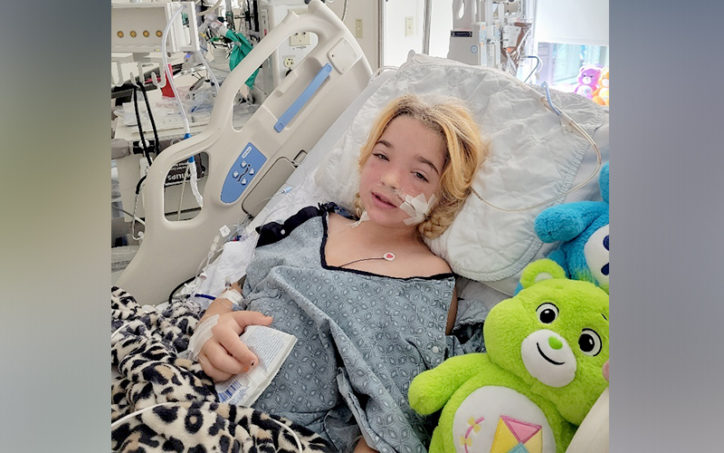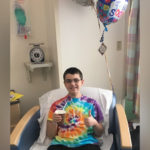For Echo, treatment for midaortic syndrome was ‘MAGIC’

Most 7-year-olds don’t have high blood pressure, let alone blood pressure that hovers around 180/110 mm Hg. (“Normal” blood pressure for kids that age ranges between 95/60 and 110/73 mm Hg.) At first Echo Roney’s parents thought her rising blood pressure might be linked to her diagnosis of a genetic condition called neurofibromatosis 1. But when her readings were still high, even with medication, it was clear something else was going on.
Sure enough, testing by doctors in her home state of Iowa revealed the cause: Echo had midaortic syndrome. In this rare but serious condition, the part of the aorta (the heart’s largest blood vessel) that runs through the chest and abdomen becomes narrow. This can lead to lower blood flow in the chest, abdomen, and lower limbs. A related condition called renovascular hypertension is high blood pressure that results from decreased blood flow to the kidneys.
Although the Roneys were happy to have a diagnosis, the next steps seemed less clear. “Echo’s doctors in Iowa weren’t comfortable performing the surgery,” says her mom, Kelly.

An innovative option
A series of referrals led the family to the Midaortic Syndrome and Renovascular Hypertension Center at Boston Children’s Hospital. When the COVID-19 pandemic hit, they worked first with Dr. Deborah Stein to manage Echo’s condition medically until surgery was possible. In the meantime, they learned about Mesenteric Artery Growth Improves Circulation (MAGIC), a type of surgery that bypasses the aorta using the mesenteric arteries rather than prosthetic graft material. The procedure was pioneered at Boston Children’s by Drs. Heung Bae Kim and Khashayar Vakili.
When they were able to travel to Boston in July 2021, the Roneys met Echo’s care team from the center. “They explained everything to us,” remembers Kelly. “They were fantastic in helping us understand what to expect and making Echo feel comfortable. It was a huge relief.”

Bouncing back
This past September, Echo underwent the MAGIC procedure, as well as a bilateral renal autotransplant that improved the blood flow to both kidneys with Drs. Kim and Vakili — and her family was amazed at how quickly she recovered. “She bounced back from surgery so well that we actually ended up flying home two weeks earlier than expected,” says Kelly. Indeed, Echo was back to school almost right away and couldn’t wait to start riding her bike again. “She’s so resilient. I’m floored by her progress.”
Because MAGIC uses a patient’s own arteries rather than prosthetic material, the tissues should grow with Echo, preventing the need for further surgery. That will allow “always on the go” Echo, now 9, to stay active running, playing, and rock climbing — and allows her doctors in Iowa to manage her care. “We’re glad not to have to travel 1,100 miles for treatment regularly,” Kelly admits. “But our experience in Boston was so amazing that it was well worth it.”
Learn more about Midaortic Syndrome and Renovascular Hypertension Center.
Related Posts :
-

Matt's story: An innovative approach to midaortic syndrome
Until he was 12-and-a-half, Matt Sarracco had hardly missed a day of school. In fact, he had won awards for ...
-

Maythum finally finds answers for midaortic syndrome
Maythum Mehdi was just 5 years old when he told his mother, Batul, that he was having trouble seeing: When he ...
-

Solving the mystery of Sophie’s high blood pressure
Sophie Lawrence loves “Baby Shark.” Like many other toddlers, she listens to the popular children’s song on repeat, bopping ...
-

Leaning into Sydney: A team approach to renovascular hypertension
In most ways, Sydney Murphy is a typical 3-year-old girl: She watches the movie The Princess and the Frog on ...





